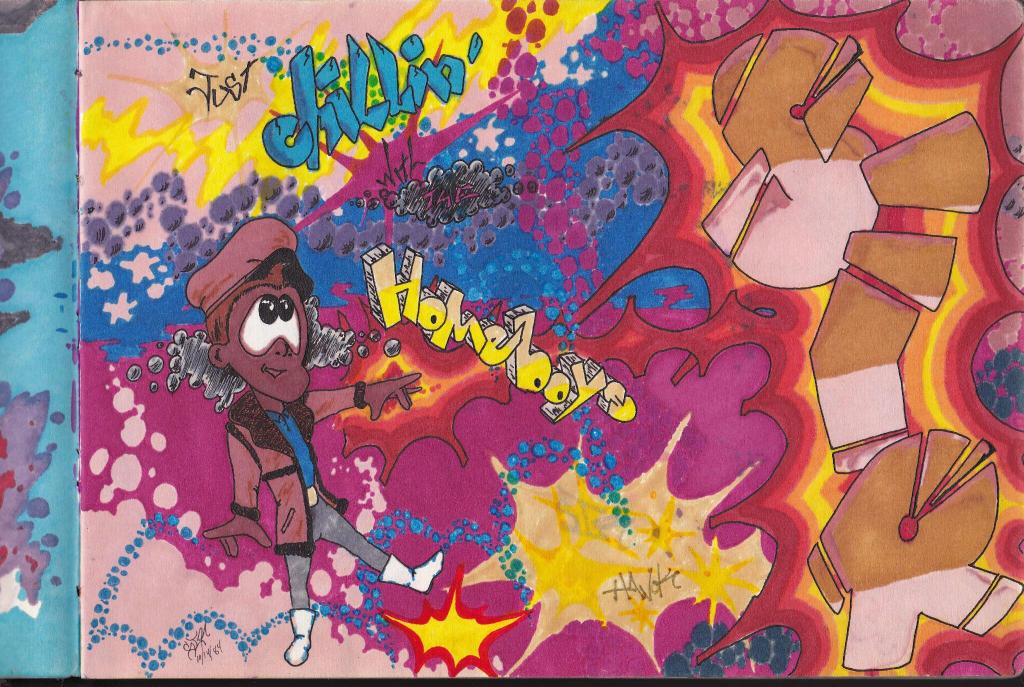For a teenager in New York, the 1980’s meant a lot of things; it depends on who you ask. But for anyone with artistic inclinations, the 80’s would, or should, include a stab at graffiti art. With minimal subway cars to go after in suburban Brentwood N.Y. Tagging the sides of industrial park building offered little visibility. Instead, the ubiquitous LEE® denim jacket was the go to location of finished pieces. However, once an artist completed their own jacket there were three subsequent options —
- Buy another jacket.
- Repaint the current jacket.
- Have others hire you to paint their jackets.
The key to option 3 was a black book filled with plenty of color pieces. Pieces that could inspire and entice others to want to wear your art. My own black book has miraculously survived the move from New York to California. While it might have disappointed art teachers who expected life drawings it offers a glimpse into the quickly changing styles of graffiti art from 30 years ago.
Unfortunately the same can not be said of the denim jackets or Adidas shell tops of the time. The interest in graffiti evolved into a love for typography as lettering on a whole as a more formal education took hold, and technology progressed.
The opportunity to return to the well of graffiti art would return in a professional capacity years later. As Senior Designer for TC Media International, the media and advertising division for Tiger Claw Inc., makers of all things martial arts related, I an my associates were tasked with developing a fresh series of magazine ads to promote one of their oldest products, the TIGER CLAW brand martial arts shoe. Hoping to shine an unexpected light on the product and have a little fun we decided to include a piece of background graffiti to help sell the concept.

Our models consisted of local martial artists and employees. We dressed them in T-shirts and sweatshirts from our catalog of illustrated apparel. The artwork which appears on this clothing is still available for purchase and remains a viable line of products to this day. What follows is a selection photos which would be used over the series of ad campaigns. They are presented in no particular order, but in some instances you can see before and after Photoshop treatment of the images.
From such photos a series of single page comic ads were finally produced. Below are just two examples of the advertisements which appeared on the back cover of Kung Fu Tai Chi magazine.
Unfortunately the piece of graffiti artwork (painted with airbrush and acrylics rather than the typical spray can) was lost. Perhaps the rolled canvas remains somewhere within the cavernous warehouse of TIGER CLAW Inc.














